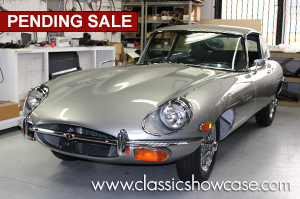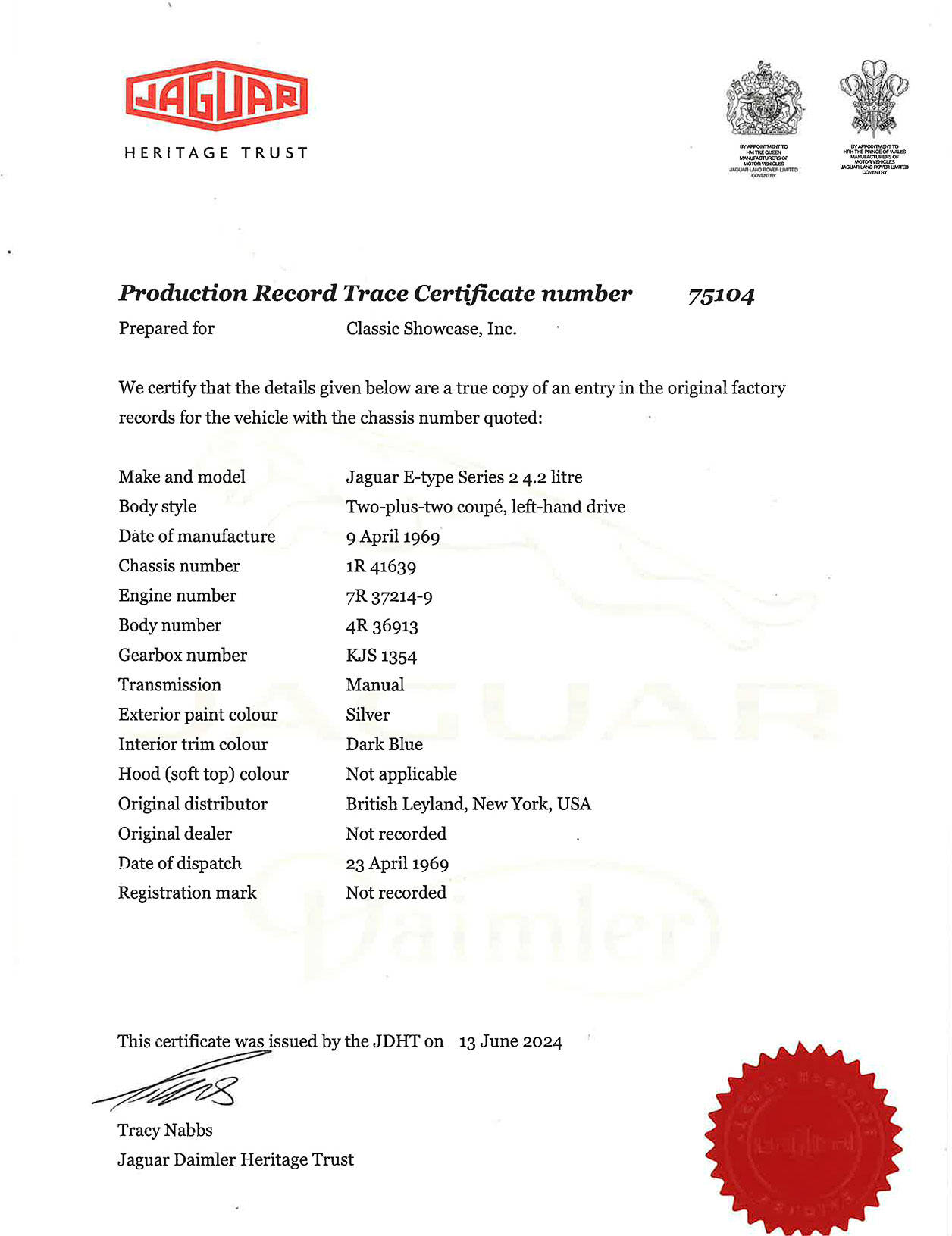1969 Jaguar-XKE Series 2 4.2 2+2
Specifications |
|
| Stock: | J69-639 |
| Current condition: | SHOW-DRIVER |
| Performance: | 4.2 DOHC in-line 6, 2 SU carbs |
| Transmission: | 4 speed manual |
| Suspension: | Independent Front / Rear |
| Color exterior: | Silver |
| Color interior: | Blue |
| Features: | Air Conditioning; Philips AM/FM Radio |
| Wheels: | Chrome Wire Wheels |
| Brakes: | Disc brakes, front and rear |
| Vin #: | 1R41639 |

Description
(SOLD); This 1969 Jaguar E-Type Series 2 2+2 is a matching-numbers example that is currently in the process of being restored to a Show/Driver level of condition. This core car came with what is believed to be only 47,512 original miles driven since new, and the progress of the restoration is moving along quite nicely. Our team has completed all body work for the Jaguar, and are in the latter stages of assembly. The E-Type's mechanical components were restored, and the engine and transmission were just recently installed to the car. Our master trimmer is in the process of installing newly created interior components. Please stay tuned to this page for updates on the restoration of this Silver & Blue 2+2 XKE!
History
The E-Type was initially designed and shown to the public as a grand tourer in two-seater coupé form (FHC or Fixed Head Coupé) and as convertible (OTS or Open Two Seater). The 2+2 version with a lengthened wheelbase was released several years later. The Series 2 introduced a number of design changes, largely due to U.S. National Highway Traffic and Safety Administration mandates. The most distinctive exterior feature is the absence of the glass headlight covers, which affected several other imported cars, like the Citroën DS, as well. Unlike other cars, this step was applied worldwide for the E-Type. Other hallmarks of Series 2 cars are a wrap-around rear bumper, larger front indicators and tail lights re-positioned below the bumpers, and an enlarged grille and twin electric fans to aid cooling. Additional U.S.-inspired changes included a steering lock which moved the ignition switch to the steering column, replacing the dashboard mounted ignition and push button starter, the symmetrical array of metal toggle switches replaced with plastic rockers, and a collapsible steering column to absorb impact in the event of an accident. New seats allowed the fitment of head restraints, as required by U.S. law beginning in 1969. The engine is easily identified visually by the change from smooth polished cam covers to a more industrial "ribbed" appearance. It was de-tuned in the US with twin two-barrel Strombergs replacing three SUs. Combined with larger valve clearances horsepower was reduced from 265 to 246 and torque from 283 to 263. Air conditioning and power steering were available as factory options.
Authenticity

